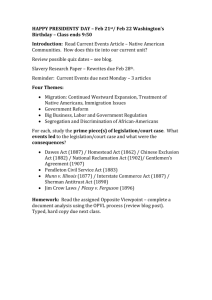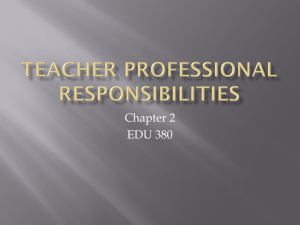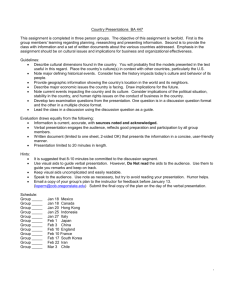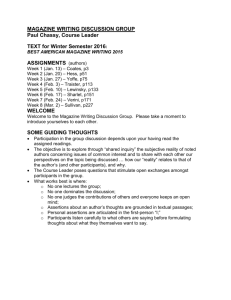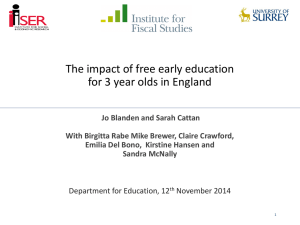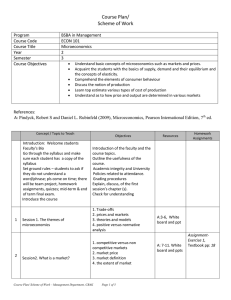Exam Review
advertisement
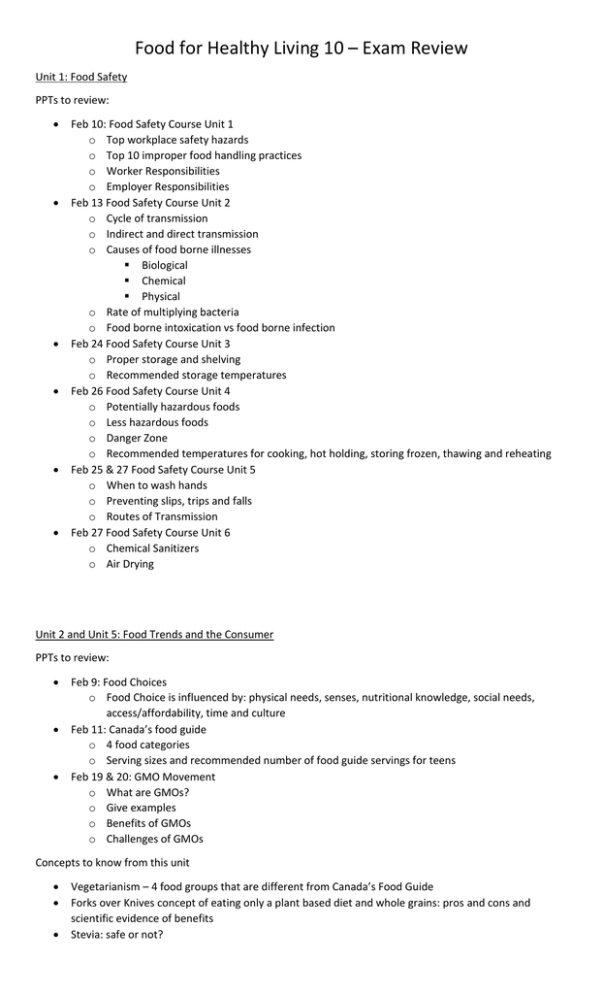
Food for Healthy Living 10 – Exam Review Unit 1: Food Safety PPTs to review: Feb 10: Food Safety Course Unit 1 o Top workplace safety hazards o Top 10 improper food handling practices o Worker Responsibilities o Employer Responsibilities Feb 13 Food Safety Course Unit 2 o Cycle of transmission o Indirect and direct transmission o Causes of food borne illnesses Biological Chemical Physical o Rate of multiplying bacteria o Food borne intoxication vs food borne infection Feb 24 Food Safety Course Unit 3 o Proper storage and shelving o Recommended storage temperatures Feb 26 Food Safety Course Unit 4 o Potentially hazardous foods o Less hazardous foods o Danger Zone o Recommended temperatures for cooking, hot holding, storing frozen, thawing and reheating Feb 25 & 27 Food Safety Course Unit 5 o When to wash hands o Preventing slips, trips and falls o Routes of Transmission Feb 27 Food Safety Course Unit 6 o Chemical Sanitizers o Air Drying Unit 2 and Unit 5: Food Trends and the Consumer PPTs to review: Feb 9: Food Choices o Food Choice is influenced by: physical needs, senses, nutritional knowledge, social needs, access/affordability, time and culture Feb 11: Canada’s food guide o 4 food categories o Serving sizes and recommended number of food guide servings for teens Feb 19 & 20: GMO Movement o What are GMOs? o Give examples o Benefits of GMOs o Challenges of GMOs Concepts to know from this unit Vegetarianism – 4 food groups that are different from Canada’s Food Guide Forks over Knives concept of eating only a plant based diet and whole grains: pros and cons and scientific evidence of benefits Stevia: safe or not? Unit 3: Nutrition PPTs to review: March 24-25: Digestive System o Digestion vs ingestion o Saliva, esophagus, stomach o Small and large intestine o Pancreas, Liver & gall bladder March 27: Nutrition Labels o Nutitional information found on food labels o % daily value o Ingredient list order o Nutrition Claims o Health Claims Concepts to know from this unit Sugar: 4 grams = 1 teaspoon, types of sugar, artificial sweeteners, evidence to suggest eating too much sugar can lead to health concerns, what types of foods is sugar found in? Simple vs complex carbohydrates (explain) Protein: types of foods with protein, function of protein, animal vs plant sources of protein Fats: functions of fats, tips to avoid eating fats, define cholesterol, 4 types of fats Vitamins: antioxidants, Vitamin D, Water and fat soluble vitamins, folic acid, vitamin C, Vitamin A, Vitamin E, types of vitamins for different stages of life Minerals: major minerals, trace minerals and electrolytes, iron, calcium, phytochemicals Water – how much do you use and how much do you need to consumer daily. Unit 4: Meal Planning and Preparation PPTs to review: March 10: Menu Planning o Why menu planning is important: healthier, reduces impulse shopping, weekly specials, buy fewer prepared meals o Factors to consider when planning a menu: # of people, eating out, need lunches?, budget o Planning a healthy, balanced menu o Preparing and shopping list Concepts to know from this unit: How to plan a menu for a day Unit 6: Careers PPTs to review: Food Careers o Food service jobs o Product development jobs o Healthcare and nutrition jobs o Agriculture jobs Diagrams to know: Cycle of Transmission: FOOD HANDLER Skin Nose Hair Hands Clothing ENVIRONMENT Work Surfaces Utensils Insects Air

